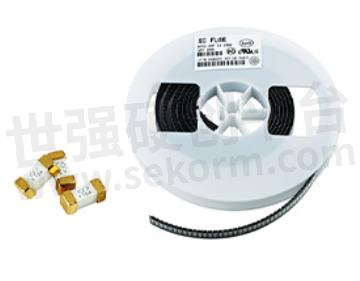The Application of Self Recovery Fuses in RS485 Interface

As is well known, the interface of intelligent instruments was originally RS232, which can achieve point-to-point communication, but this method cannot achieve networking function. The subsequent RS485 resolved this issue. So the current RS485 interface is quite popular among intelligent instruments. Today, the editor will explain the application of Self Recovery Fuses in the RS485 interface.
RS485 has the advantages of long communication distance (over 1200m), high transmission rate (10Mbps), high signal-to-noise ratio, convenient control, low cost, and the ability to achieve multiple nodes on a single bus, as well as a variety of transceivers that can be used. It has been increasingly recognized by users.
However, with the increase in usage frequency, the problems encountered by RS485 become more apparent. Due to its low voltage (only 5V), when using intelligent instruments with RS485 interfaces, the withstand voltage of the components themselves is also low, resulting in instant damage to the RS485 interface when some large voltage passes through, leading to serious damage to the communication system. Therefore, for the protection of the RS485 interface, the self recovery fuse is a cost-effective option.
For the circuit protection designed for the RS485 interface, overcurrent protection, and voltage protection are generally selected. The use of positive temperature coefficient thermistor devices is a cost-effective protection solution.
In the event of a short circuit in the circuit, a positive temperature coefficient thermistor device can quickly transition from a low resistance state to a high resistance state, thereby limiting current and protecting the RS485 interface and equipment. For overvoltage protection, we can use TVS tubes (silicon based ESD protection devices). TVS tubes have low clamping voltage, high ESD resistance energy, and small packaging size, making them an ideal choice for RS485 interface electrostatic protection and overvoltage protection.

Fig.1
- +1 Like
- Add to Favorites
Recommend
- Self Recovery Performance and Working Process of Self Recovery Fuses
- Application of Overcurrent Protection for Self Recovery Fuses
- Typical Applications of Self Recovery Fuses
- The Relevant Issues That Self Recovery Fuses Can Solve in Security Equipment
- How to Protect Circuits with Self Recovery Fuses
- Briefly describe the application field and protective effect of self recovery fuses in automobiles
- The Application of Self Recovery Fuses in the Horn System
- Guidelines for Selecting Self Restoring Fuses and Disposable Fuses
This document is provided by Sekorm Platform for VIP exclusive service. The copyright is owned by Sekorm. Without authorization, any medias, websites or individual are not allowed to reprint. When authorizing the reprint, the link of www.sekorm.com must be indicated.





























































































































































































































































































































































































































































































































































































































































































































































































































































































